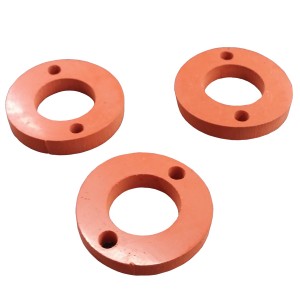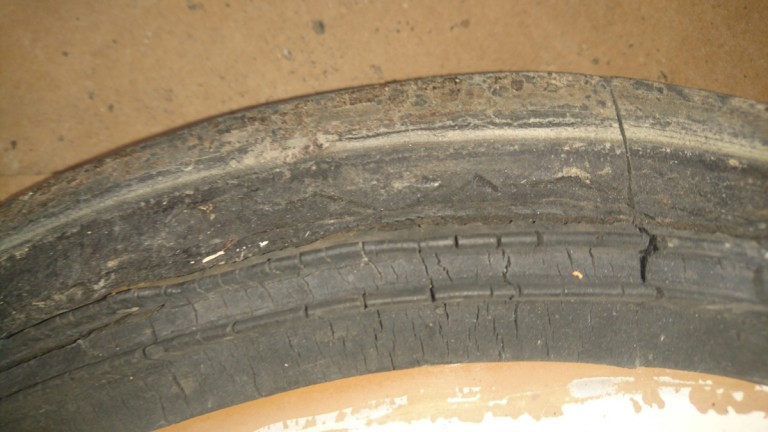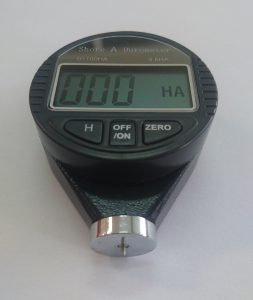No matter what your intended application, choosing the correct style of rubber sheet material will help you achieve the longest functional life of the application and mitigate any issues that could arise during its operation. This article explains the 7 main factors that should be considered in order to guide your choice. We have also put together a quick reference chart detailing 8 of the most common rubber types on the market that cover the majority of applications you may come across. But first, a little about the history of rubber.
The invention of the first useful rubber compound is credited to Charles Goodyear who experimented with mixing natural rubber with Sulphur. Even today companies continue to mix chemicals with rubber to further improve its performance and achieve specifically desired characteristics (such as increasing its maximum operating temperature or resistance to particular chemical combinations). This has lead to a wide variety of rubber styles on the market causing headaches for anybody with little experience buying rubber sheet or looking for fast answers on what’s best for their application. Hence, we put together this guide
1. THICKNESS
One of the first considerations that you should make when choosing a rubber sheet is how thick the rubber needs to be. This is especially important when choosing rubber for gasket and sealing applications, however since it will also need to be considered in every other application at some point, it is a good place to start.
Thickness requirement can also play a part in narrowing down the range of alternatives available as not all varieties of rubber are readily available in all thicknesses and some may require special ordering. For example, if your application requires a rubber thicker than 12.7mm, the list of rubbers that are readily available is much more limited.
2. TEMPERATURE
Another very important factor is the temperature that your rubber will be exposed to. It is important that you consider both the upper and lower limit as these vary between rubbers. If exposed to conditions where temperatures exceed the rubbers maximum rating it will become sticky and ultimately melt and burn up. If exposed to temperatures lower than its minimum it will begin to become more solid, making it brittle and prone to cracking.
Some rubbers handle temperature better than others, for example Silicone Rubber can handle constant temperatures between -70ºC and 200ºC making it a popular choice in many extreme temperature environments.

3. ABRASION RESISTANCE
Not all formulations of rubber offer the same level of resilience against abrasion. The abrasion resistance of a rubber refers to its ability to resist mechanical action such as rubbing, scraping or erosion that ultimately results in the removal of material from the rubbers surface.
In applications where this is a critical factor, the best choice of rubber would be an Abrasion Resistant Red Rubber, which is sometimes referred to by the brand names Chutex® or Linatex®, designed for the harsh abrasive conditions associated with ore and slurry chutes on mine sites. Natural Rubber Insertion is another popular option as an abrasion resistant rubber offering good durability for an affordable price.
4. OZONE / UV RESISTANCE
Exposure to Ultra-violet (UV) rays and ozone is detrimental to many types of rubber including natural rubber, nitrile rubber and other rubbers where double bonds form a majority of their polymer chain. When these rubbers are exposed to the elements for extended periods, they break down and experience occurrences such as stress corrosion or ozone cracking.
Consideration should be taken to only use UV / Ozone resistant rubbers in these cases, the best being Viton, silicone or EPDM. It is especially important to consider ozone and UV resistance in critical service applications such as gaskets as breakdown can begin to occur even in environments where ozone is less than 1 part per million (i.e. not much!).

5. OIL RESISTANCE
Although a resistance to oil may only be required in some applications, it is generally a very important factor to consider. Most common rubbers on the market will be attacked by oil. This is because natural rubber (the basis of many types of rubbers) is attacked by hydrocarbons leading to severe degradation.
Nitrile rubber was developed specifically to withstand oil. It incorporates an acrylonitrile polymer to specifically provide resistance to hydrocarbon based oils, greases and solvents. Nitrile has far greater hydrocarbon resistance than Neoprene and has far superior resistance than natural rubber. Nitrile is also resistant to some synthetic based oils, greases and solvents. Viton® is another rubber that has an excellent resistance to a wide variety of oils and also has a higher temperature rating.
6. ACID RESISTANCE
The pH scale is a measure of the hydrogen ion concentration in a solution. It is used to determine how acidic or basic (alkaline) a solution is. Almost all rubbers are attacked by acids, however some stand up better than others. Acid resistance is another consideration that may not be relevant in all applications, however it pays to consider it. We need to remember that almost all solutions that the rubber will come in contact with will lie somewhere on the pH scale and over time, even low levels of acidity can affect some rubbers.
If the rubber in your intended application will be exposed to highly acidic solutions, some rubbers like Viton® offer resistance to a wide range of acidic chemicals, however not all, such as in the case of acetones and ethyl ethers. We recommend that you seek specific advice from experienced technical personnel in this instance.
7. HARDNESS
The final consideration to make when selecting a rubber is the hardness. This is often referred to as the shore durometer or “duro” of the rubber, named after Albert F. Shore the man who defined it. Some rubbers such as Natural Rubber Insertion are only available in a small range of durometers, whereas others such as silicone are more readily able to be produced in a wider range of hardness’s.
Hardness will generally need to be considered in most applications, especially sealing applications where hardness can affect compression and pressure.

REACHING A FINAL DECISION ON A RUBBER SHEET
In many cases you may find it difficult to find a rubber sheet that perfectly fits all of the criteria that your application requires. In this case, we advise that you determine which of these 7 factors contribute the most to your application. For instance, a person who is looking to purchase some rubber sheet to protect and line the steel tray of his truck or utility vehicle would likely weigh Abrasion Resistance, UV / Ozone Resistance and Thickness above the other factors as these are the ones that will have most impact on the rubber in that particular application.
To help you compare the grades of rubber available we have put together this chart that tables some specific technical and performance characteristics of the 8 most popular rubber sheet varieties on the market. The table also includes some extra information such as pros and cons and some examples of the applications that each are use generally used for.
Click here to open the Sheet Rubber Selection Chart
Associated Gaskets carries large amounts of stock of all the rubbers explained in this article and included in the table (plus many, many more). We can supply it in roll form, by the metre or converted into cut components such as gaskets, strips or tape. To speak to one of our experienced rubber customer service representatives, find the details of your nearest AG branch by clicking here.
